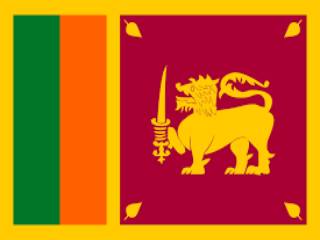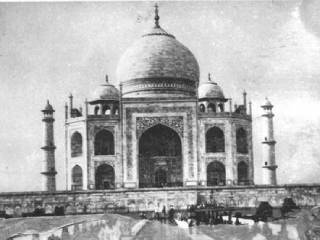Saying "I told you so" is getting a bit boring for this analyst. Particularly because there is no great skill involved in predicting what Prime Minister Manmohan Singh and his designated diplomatic hitters will do next, by way of compromising national security. Like well-trained seals, they will jump through the newest hoops held up by Washington. Progressively more stringent conditions are being imposed on India, because Delhi is seen as desperate for the nuclear deal which, it believes, confers recognition � however spurious � on this country as a "nuclear weapon state," and to have which it is willing to pay any price.
When many months ago I ventured in this paper that the replacement costs of the proposed "separation plan" added to the price-tag of imported reactors would be in the "thousands of crores of rupees," it was pooh-poohed as an exaggeration by many. The Department of Atomic Energy, having done its math, has reportedly arrived at a still larger figure. This total stands to grow to humungous proportions if, as is likely, the Indian government agrees to the latest American condition carried by a State Department team led by Robert Stratford here to finalise the amended Section 123 of the US Atomic Energy Act, requiring India formally to commit itself to never test again and, in case it does so, to dismantle and return any and all materials imported from the United States and plants and processing or production units set up with American "civilian nuclear technology."
This last is a manifestly impractical, even silly, demand made, no doubt, to test how far Delhi will bend to Washington’s will. Moreover, permitting India to build up a "strategic reserve" of highly-enriched uranium for the imported reactors � that Dr Manmohan Singh has set his heart on � only makes transacting for them politically less objectionable without making the deal any less onerous for the country, now trapped into a cycle of reactor and fuel dependency and exorbitant payouts.
So far in the give-and-take department, Indian negotiators have been doing all the giving and the Americans the taking, even as after each meeting both sides put up a show of gritty negotiations as cover for Shyam Saran & Co.’s giving away another part of the store. If this is the fabled path to great power status, self-respecting Indians are right to wonder if it is any different than reducing the country into an American vassal in the region � la Pakistan.
It is a pity that on the verge of genuine great power, India is suffering from loss of nerve and is being transformed into a sovereignty-sapped non-entity doing Washington’s bidding by a strategic vision-challenged Congress Party Prime Minister and government. If in Manmohan Singh’s skewed intellectual universe, Britain was the locus of modernity, which India benefited from in the past, it is the United States he now trusts to lead the country kindly into the future. As an influential ideologue in the Communist Party of India (Marxist), who has been tracking Dr Singh’s career, put it: "The trouble with Manmohan is that he is always looking for the next master to please." Starting with Sanjay Gandhi at whose behest, as professor in the Delhi School of Economics, he tried to drum up support in the academia for the Emergency and was richly rewarded for his troubles with progressively higher posts in government, Prime Minister Singh, according to this assessment, has found in the United States someone new to serve.
But the good doctor needs to be reminded that playing "follow the leader" in the external realm may personally benefit him (the offer of UN Secretary-General’s post, for instance, which reportedly is quite the buzz in Washington and New York). But it will fetch India only contempt in the developing world (like in the recent non aligned meeting on "nuclear Iran" in Kuala Lumpur, and permit China to consolidate its advantage by some deft manoeuvring � to wit, China’s invitation to Iranian President Mahmoud Ahmadinejad to address the Shanghai Cooperation Organisation), and condescending treatment from the US reflected in the PM’s statements in Parliament being routinely contradicted by the developments related to the deal. It seems, however, that these tendencies (or character flaws) of Manmohan Singh’s even over-ride reservations he, as an economist, must have about the nuclear deal as an enormous financial liability.
Restricting further Indian testing and stopping its fissile material production have been central US concerns on which the George W. Bush administration has not budged an iota. US under secretary of state Nicholas Burns had made it clear from the beginning that the Bush administration would rather do without the deal than have one that retains for India a cost-free testing option or allows it an ample fissile material stock. It was on these fundamental points that the Burns-Saran talks teetered in Washington before the Indian government gave in and the draft for the July 18 statement was cleared by both sides.
It conditioned civilian nuclear cooperation on India’s not testing again � however this commitment is tagged to India’s "voluntary" test moratorium � and on its supporting an FMCT. The arms control bureaucracy in Washington had ensured this. This much can be read in the submissions by Burns and his State Department colleague, Robert Joseph, to Congressional committees and in the latter’s written replies to Senator Richard G. Lugar, the leading light of the US Senate Foreign Relations Committee and potential facilitator of the deal. It was the proverbial foot-in-the-door that helped Washington methodically to prise open the Indian chest of concessions. Even so, the ease with which the US government was getting its demands met by India � the last great Non-Proliferation Treaty hold-out � must have surprised Washington and emboldened it to make still more ambitious demands, like the ones formally communicated to the external affairs ministry this week.
As an example of Delhi’s egregiously craven attitude, consider the case of the 40 MW CIRUS reactor, one of the two reactors producing weapon-grade plutonium (WgPu). Referring to the original CIRUS agreement, US under secretary of state Joseph testified before the Senate Foreign Relations Committee on November 2, 2005 that the issue of the "illegal" use of this reactor for military purposes by India was "inconclusive owing to uncertainty as to whether US-supplied heavy water contributed to the production of plutonium used for the 1974 device."
Notwithstanding this authoritative position, Leonard Spector, among the most vociferous non-proliferationist India-baiters in the US, mounted a public campaign, characterising the use of CIRUS for making weapons as evidence of bad faith and indication that India would again violate agreements. It prompted the Canadian government formally to request Delhi to put the CIRUS reactor under international safeguards, something Delhi agreed to with alacrity. While announcing its "separation plan," the Indian government offered to decommission the CIRUS, without having a ready plutonium reactor to replace it, thereby cutting off the source of 25 kg of WgPu annually. With at most only a two-three-year window available, there is simply no way India can build up adequate fissile material holdings for any and all contingencies in the future.
This decision can be seen as a down payment in terms of the support for the Fissile Material Cut-off Treaty (FMCT) Prime Minister Singh had promised, and which treaty in its US draft form may be expeditiously approved by the five so-called "NPT-recognised" nuclear weapon states (P-5) in the Commission on Disarmament in Geneva. It will, ipso facto, cap the size of the Indian fissile material stockpile and hence of the Indian nuclear arsenal. This along with the testing ban, which will freeze the quality of weapons, constitute the US’ non-proliferation motivation for the nuclear deal with India. Delhi is now being asked to accept these conditions on the basis that this is what the "rights and responsibilities" of an NPT nuclear weapon state, that India is all too keen to accept, entail. (The P-5 have ceased testing and production of weapon-grade uranium and WgPu for the nonce, after extensive testing over the years and the build-up of huge fissile material stockpiles.) Talk of being hoist with one’s own petard!
The Manmohan Singh government’s soft-headed negotiating strategy has done two things: it has reassured the champions of the NPT in Washington that all is well and that the arm-twisting has worked in obtaining for the US the elusive non-proliferation chalice � the incorporation of India in the Treaty regime as a de jure non-weapon state. It is a status that will be formalised with the Additional Protocol, preventing India from ever switching the safeguarded civilian facilities to military use as the P-5 can � the real test of a nuclear weapon state under NPT.
Curbing India’s nuclear capabilities and ambitions by such means is the argument the US is using to sell the deal to the Nuclear Suppliers Group. And, it has infused new life into a decrepit NPT order, cementing the nuclear status quo of a world divided permanently into nuclear haves and have-nots without the third category of pesky nations to worry about. (Iran and North Korea will be bought off or coerced, and Israel and Pakistan frog-marched, into the regime once India is safely collared.) With the Manmohan Singh government failing to take the basic precaution of insisting from the start on reserving the right to continue testing and accumulating fissile material until such time as certain reasonable levels in these two areas relative to the P-5 states are attained by this country, India finds itself victimised by the negotiating system it helped create.

 Mizoram: EC accepts Christians’ demand to defer counting on Sunday, but what if Hindus had made a similar demand?
Mizoram: EC accepts Christians’ demand to defer counting on Sunday, but what if Hindus had made a similar demand? Sign Petition : Immediately repeal the draconian and unconstitutional ‘The Waqf Act, 1995’
Sign Petition : Immediately repeal the draconian and unconstitutional ‘The Waqf Act, 1995’ Shriram : Sri Lanka’s saviour
Shriram : Sri Lanka’s saviour Why it is so cool to malign Hindu gods and goddesses, but it may not be that easy now
Why it is so cool to malign Hindu gods and goddesses, but it may not be that easy now Shocking Truth of Taj Mahal exposed by Late Pujya P. N. Oak
Shocking Truth of Taj Mahal exposed by Late Pujya P. N. Oak How are Hindus treated in states where they are in a minority?
How are Hindus treated in states where they are in a minority?